Nous nous sommes rendus dans la ville septentrionale de Gáldar à l’extrême nord-ouest de Gran Canaria. Au milieu de sa côte, au sommet des falaises, on trouve des petits villages de charme comme Sardina del Norte. Entre serres et bananeraies, et avec les vagues de la mer en toile de fond, nous atteignons cette enclave côtière particulière et abrupte.
En plus des ports principaux, l’île de Gran Canaria a toujours eu des ports plus petits Sardina del Norte, un port plus reculé, mais d’une grande valeur pour la population locale, situé dans un endroit très original.
Sardina était l’une des nombreuses portes d’entrée à l’île par lesquelles les produits agricoles étaient autrefois acheminés vers l’intérieur et vers l’extérieur de l’île. Son quai conserve un grand charme et son environnement lui confère une beauté incomparable.
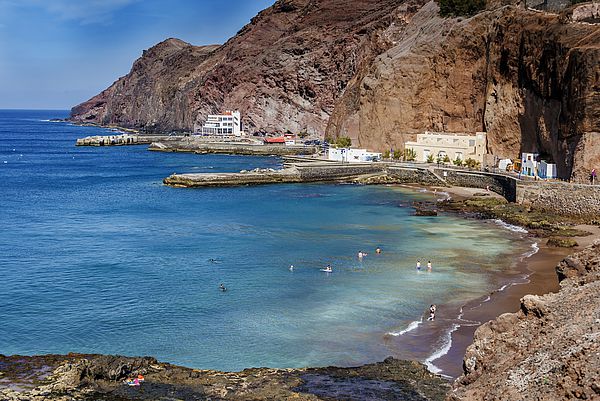
L’histoire de cette baie est partagée en deux périodes principales : l’une, au cours du XVe siècle et de la première moitié du XVIe siècle, qui coïncide avec la phase de lutte pour la conquête de l’île et le premier demi-siècle de colonisation. La seconde : le XIXe siècle, une autre période moment de réelle importance pour le port avec l’arrivée de l’industrie sucrière sur l’île.
L’emplacement de Sardina del Norte était considéré comme stratégique pour les conquistadors. Parce que le port se trouvait en face de Gáldar qui était, à l’époque, le siège des Guanartemes de l’île : pour eux, il s’agissait d’un endroit parfait pour atteindre le centre politique de la Gran Canaria préhispanique. Après la conquête, c’est à Gáldar que fut située la première capitale de Gran Canaria sous le nom de Ville royale de Gáldar.
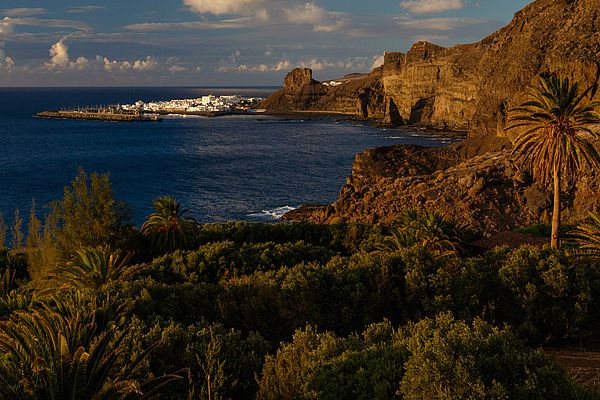
L’importance de Puerto de Sardina a été conservée en partie en raison de sa relation avec le commerce du sucre. Elle a ensuite diminué à partir de la seconde moitié du XVIe siècle suite à la consolidation du port de La Isleta (aujourd’hui Puerto de la Luz y de Las Palmas) en tant que principal port de l’île. À cela s’ajoute l’abandon progressif de l’industrie sucrière de Gran Canaria au fil des siècles, en raison de l’essor de la production américaine de cet édulcorant cristallin.
Mais le temps qui s’est écoulé n’a pas enlevé à cette baie son pouvoir de séduction. Un charme qui, aujourd’hui, brille par son ancienneté et son calme, avec sa plage et son port de pêche. Calme et originale.
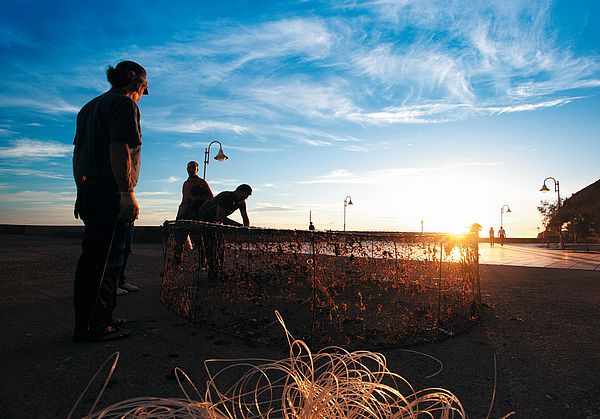
Caractéristique principale de cette partie du littoral ? elle est peu exploitée et elle compte des milliers de recoins presque intacts. Cachée entre falaises, elle est fréquemment balayée par les alizés et la forte houle.
Il n’est pas étonnant que la flore et la faune marines abondent dans cette région. Les tons bleu-vert de ses eaux en ont fait l’un des lieux les plus appréciés des amateurs de plongée sportive. Les fonds marins abritent des pieuvres, des langoustes, des holothuries et des hippocampes. Dans sa zone sablonneuse, on trouve des sicyases sanguineus, des raies-papillons, des Saint-Pierre et des requins-anges.
Ce lieu n’attire plus les navires conquérants mais les baigneurs et les voyageurs qui sont conquis par son charme et sa tranquillité. En continuant notre promenade et en laissant la digue sur la gauche, nous nous retrouvons dans une petite crique présidée par El Roquete, une maison taillée dans la pierre qui évoque les établissements préhispaniques jusqu’à l’arrivée des Castillans.
Cette zone est connue pour ses nombreux bassins, cachés le long de ses berges. Des zones où, à marée basse, la nature nous offre de merveilleuses piscines naturelles d’eau salée prêtes pour une bonne baignade. Certaines sont si grandes qu’on peut même y plonger.
Majestueux et imposant. Sur la dernière crête côtière du nord de l’île se trouve le Phare de Punta Sardina. À quelques kilomètres seulement du village se trouve ce géant lumineux qui, il n’y a pas si longtemps encore, assurait la navigation maritime le long de la côte nord-ouest de l’île, en illuminant la bande de côte entre la pointe de La Aldea et La Isleta.
Ce titan solitaire rouge et blanc a été le protagoniste des mille et une photos que ses visiteurs prennent chaque jour au coucher de soleil en toile de fond. Sans doute l’une des cartes postales les plus reproduites et les plus représentatives de Gran Canaria.
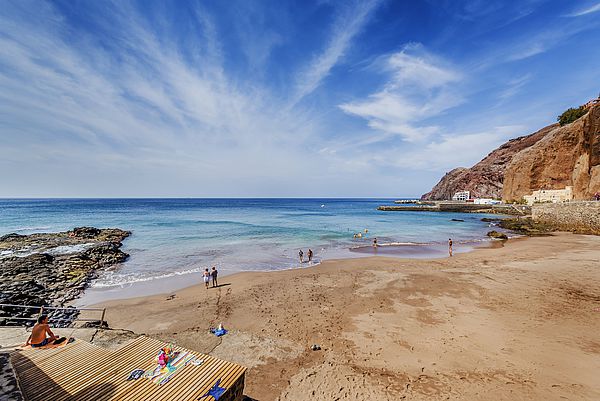
La commune septentrionale de Gáldar est l’une des plus importantes de l’île sur le plan socio-historique et culturel. Elle s’étend du littoral accidenté aux sommets, pour culminer dans le Monument naturel du Montañón Negro, ce volcan qui est entré en éruption pour la dernière fois il y a environ 3 000 ans, et c’est l’une des éruptions les plus récentes à Gran Canaria.
En montant de la mer vers le sommet, nous pouvons admirer des paysages splendides comme ceux qui entourent la zone de loisirs de Monte Pavón ou de grands points de vue panoramiques comme celui situé dans la Caldeira de Los Pinos de Gáldar qui se trouve également dans la partie haute de la commune.
Il convient de noter que Gáldar abrite, au sein du Barranco Hondo, le site archéologique de Risco Caído qui est inscrit au Patrimoine mondial de l’UNESCO.
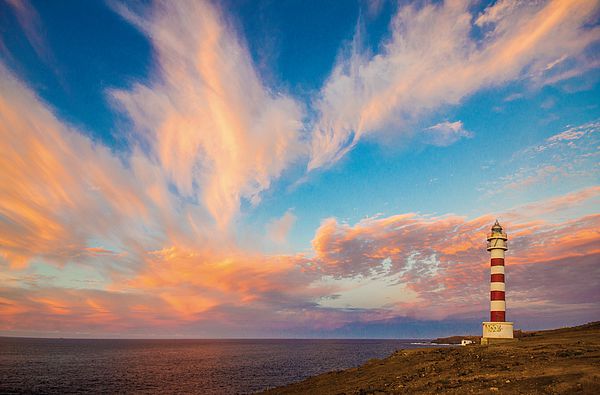
Si vous arrivez à Sardina depuis la capitale, vous pouvez prendre la route nord de Las Palmas de Gran Canaria en direction d’Agaete, GC-2. Cette route à deux voies possède une sortie, environ 18 kilomètres plus loin, qui indique l’embranchement vers Gáldar. Au bout de cette voie de décélération se trouve un rond-point dont l’une des sorties mène déjà à Sardina del Norte.
Il est situé au cœur de la ville de Gáldar. La grotte qui donne son nom au parc archéologique a été découverte au XIXe siècle et constitue un magnifique exemple des représentations artistiques des anciens habitants de Gran Canaria.
Ce site nous transporte dans ce qui fut la capitale de la Gran Canaria indigène, et la première grande ville de l’île fut ensuite construite tout à côté.